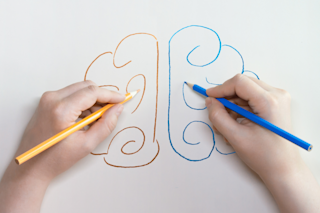There are hundreds of personality quizzes online that claim to tell you, based on criteria ranging from your preference in paintings to your reported ability to recall names and faces, whether the right or left half of your brain is dominant. Left-brained people, the quizzes will tell you, are logical and excel at language and math; right-brained people are more imaginative, emotionally intelligent and skilled with spatial reasoning. There’s just one problem: That’s not how brains work.
“Popular science enthusiasts sort of took this idea and ran with it, and it's just become enmeshed in popular culture now, and it's not going away. But it's not true,” says neuroradiologist Jeff Anderson. He would know — he’s the senior author of a 2013 study from the University of Utah that used MRI to analyze brain activity across hemispheres.
Despite this enduring belief, there’s no such thing as being “right-brained” or “left-brained.” ...














